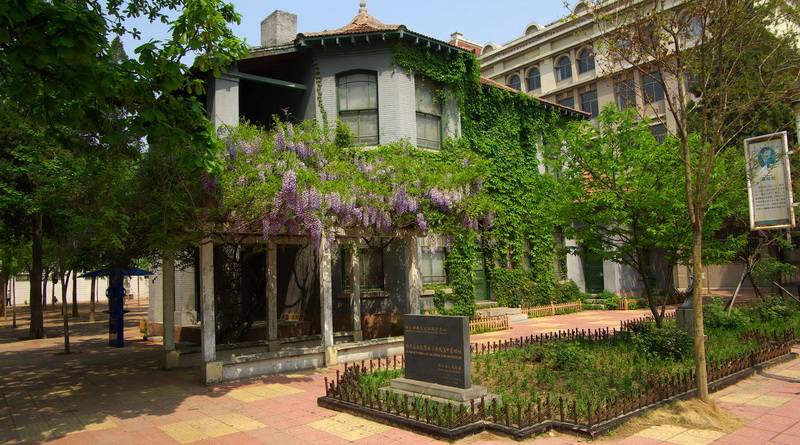Weifang (Shandong) – Historic School and Hospital
In my China visits, I often search out places based on bits of information gleaned from some prior reading. This time, in Weifang, Shandong Province, it was to find the memorial for the famous Olympic athlete and missionary, Eric Liddell. As often happens, I stumble onto some fascinating history which causes me to explore some new part of our common East/West history.

I understood that we would find the memorial on the grounds of Weifang No. 2 (Guangwen) Middle School. It was to be just a short distance from the well-known Weifang People’s Hospital.
With the aid of an English-speaking Chinese friend, we arrived at the school gates. It was May 1, an important national holiday in China; everything was locked up. Explaining why we had arrived, the guard kindly allowed us to enter. We had the campus to ourselves.
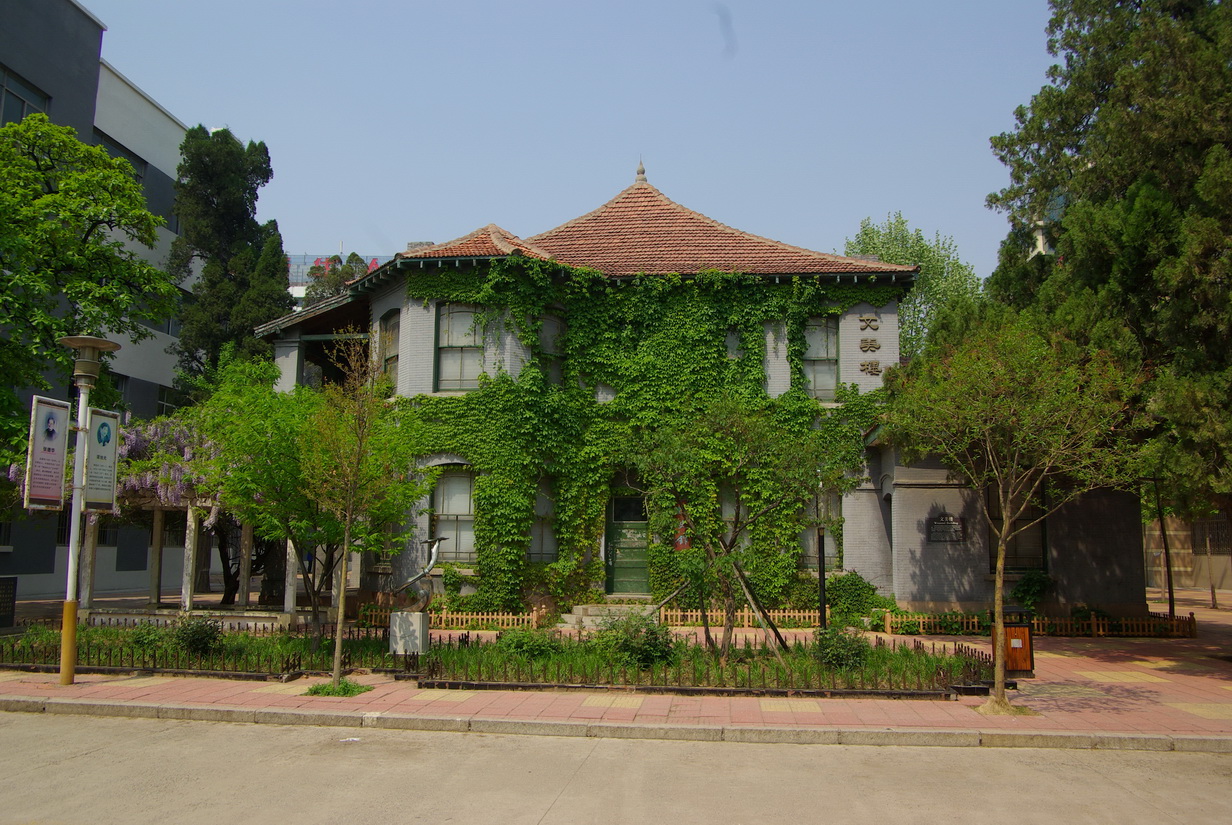
We passed the guard house and made our way up a broad central avenue of the school grounds. Two older buildings immediately caught my eye. The architecture was not traditional Chinese.
Commemorative plaques identified the buildings as part of an American Presbyterian Mission dating from 1883. The buildings are preserved as the historic beginnings of Guangwen Middle School (or high school). I was amazed to learn later that this site provides a significant historical link to some of the first Western-style schools in Shandong Province and in all of China.
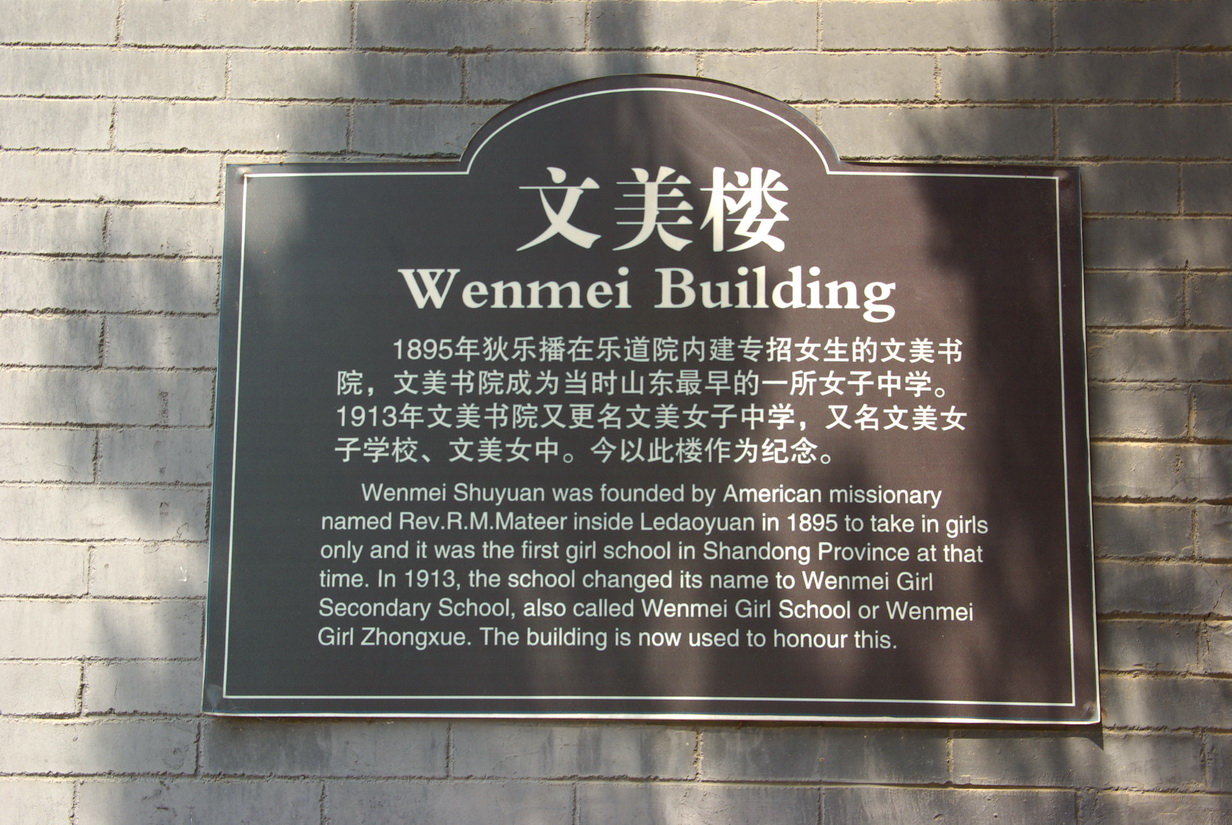
One plaque notes the founding of a boys school in 1884 and another building cites the founding of the first girls school in Shandong in 1895.
Back home, with a chance to explore online resources, I learned that R.M. Mateer, founder of the school, came from a family of Mateers that figure prominently in the history of early schooling and the development of higher education in Shandong and China.
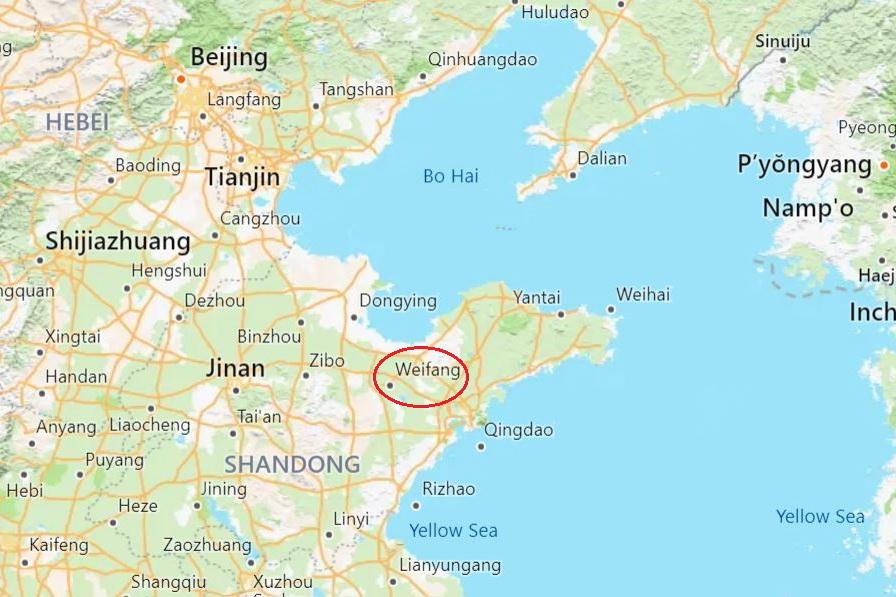
The elder brother, Dr. Calvin Mateer, with another early missionary, Hunter Corbet, had earlier established a school for boys in Tengchow (now known as Dengzhou, in Yantai prefecture on the north coast of Shandong Province). This first school developed over some years to be Tengchow College and has been described as the first higher education institution in Modern China. So it was that two missionary brothers founded schools, one in Dengzhou and the other here 20 years later.
This school site in the City of Weifang (also known as Weixian or Weihsien) was more centrally located in Shandong (Shantung) Province, and in 1904 the schools chose to amalgamate. Other schools in the province started by British Baptists and Anglicans also jointed to become the Shantung Union College of Arts and Science.
My research into the history of early schooling in Shandong Province has revealed many interesting stories of the early efforts by foreign missions to introduce and establish Western-style education into China.
Sufficient to our story here, the move by Tengchow College here to Weifang was the first step in mergers and further moves of schools to the capital city, Jinan, where they became part of Shantung Christian Union University (1909), then Cheeloo University (1915). Shandong University today continues to occupy the grounds and many of the original buildings of Cheeloo University.
On this first visit to Guangwen Middle School, however, I had no idea of the significance of the school. The brief information on the historical markers simply piqued my curiosity, starting my exploration of the history of these earlier times.
I came to Weifang out of respect for the life and accomplishments of Eric Liddell. While the culture of Christian life has changed over the past century, the faith commitments of people like Liddell and the Mateer family continue to resonate with many of us. It is true that Western education entered China as a consequence of Western colonial and trade ambitions, however, many missionaries of that period were intent upon achieving something much more important and profound than personal or national economic gain.
Perhaps today, the vindication of their efforts is demonstrated by the thousands of exchange students who annually go abroad to participate more fully in the world-wide sharing of human knowledge. It is interesting to reflect on some of the early beginnings of this movement in China.
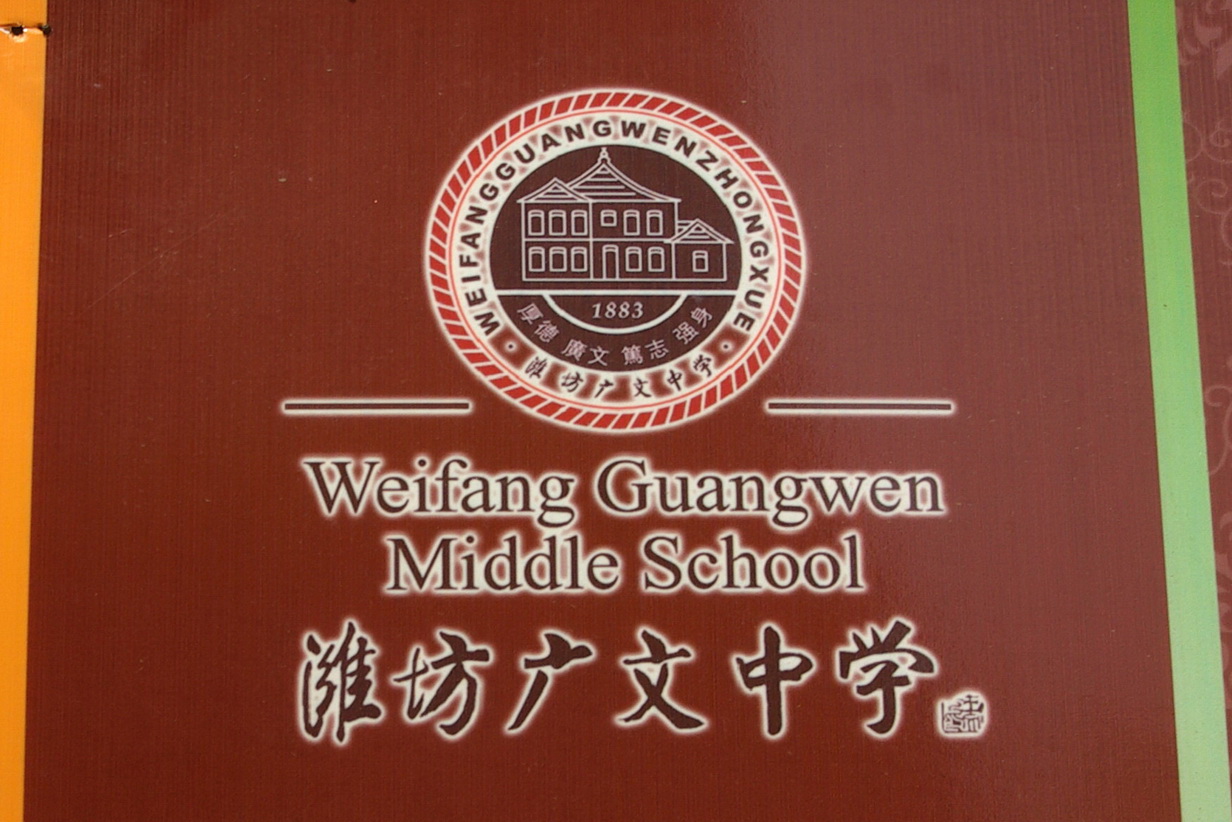
Weifang No 2 Middle School has chosen to preserve the historical connections in visible ways. The school insignia and preservation of historic buildings suggests a deep appreciation for its fascinating history.
Today, this high school boasts 4700 students. Shandong University, in turn, has a current student population of 60,000 and is regarded as one of the top universities in China.
But, I had other interesting history to yet explore this day.
Learning that the Liddell memorial had been moved, we headed back toward the large modern hospital seen earlier. Local people joined us, showing interest in our visit. One gentleman, with excellent English, informed us he was a school teacher. Another identified himself as a hospital administrator. On our way, they guided us past other historic buildings. Eventually we entered a courtyard before a huge building that was also well-preserved or recently restored.
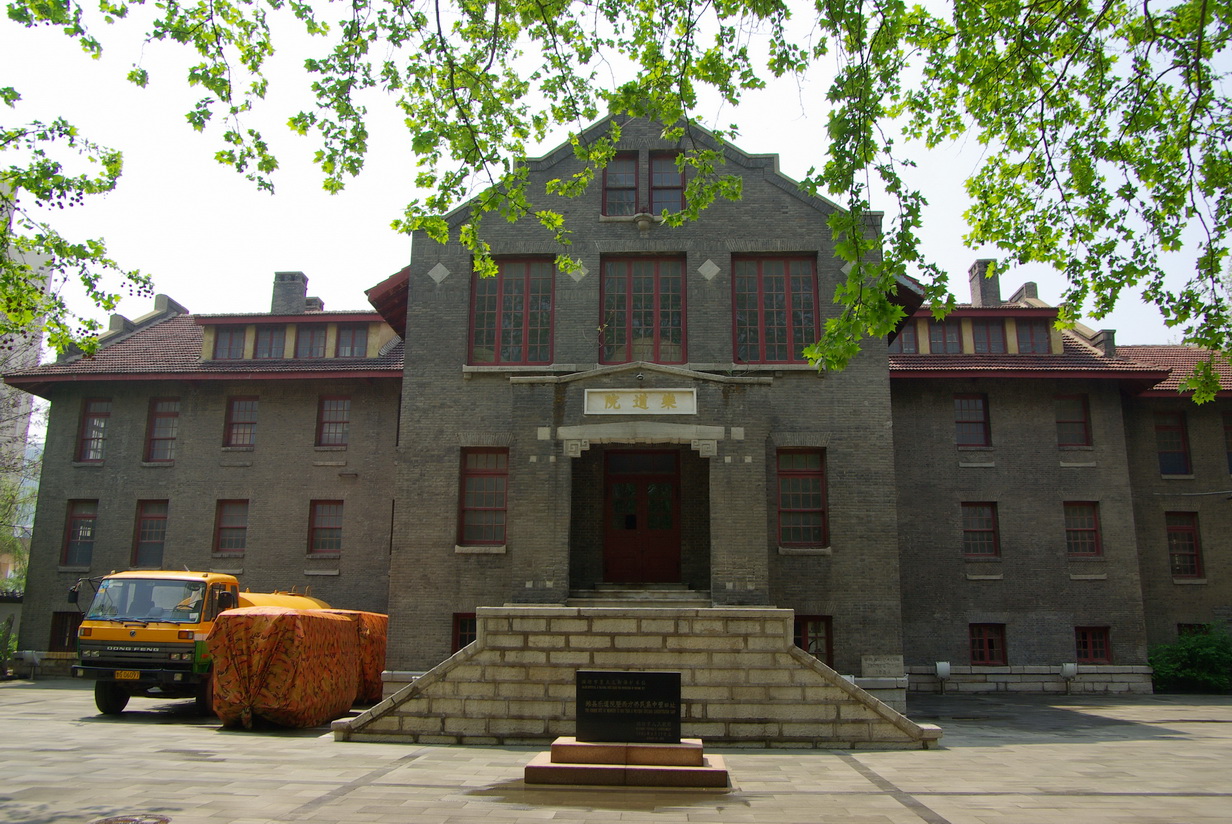
As in the case of the school site just behind us, I later learned this was the first hospital of Western medicine in what is now the City of Weifang. Completed in 1925 by the same American Presbyterian Mission, it was named Shadyside Hospital. It was named, I learned, for its American church benefactors in Pittsburgh, Pennsylvania (USA), from which had come a substantial donation towards its construction.
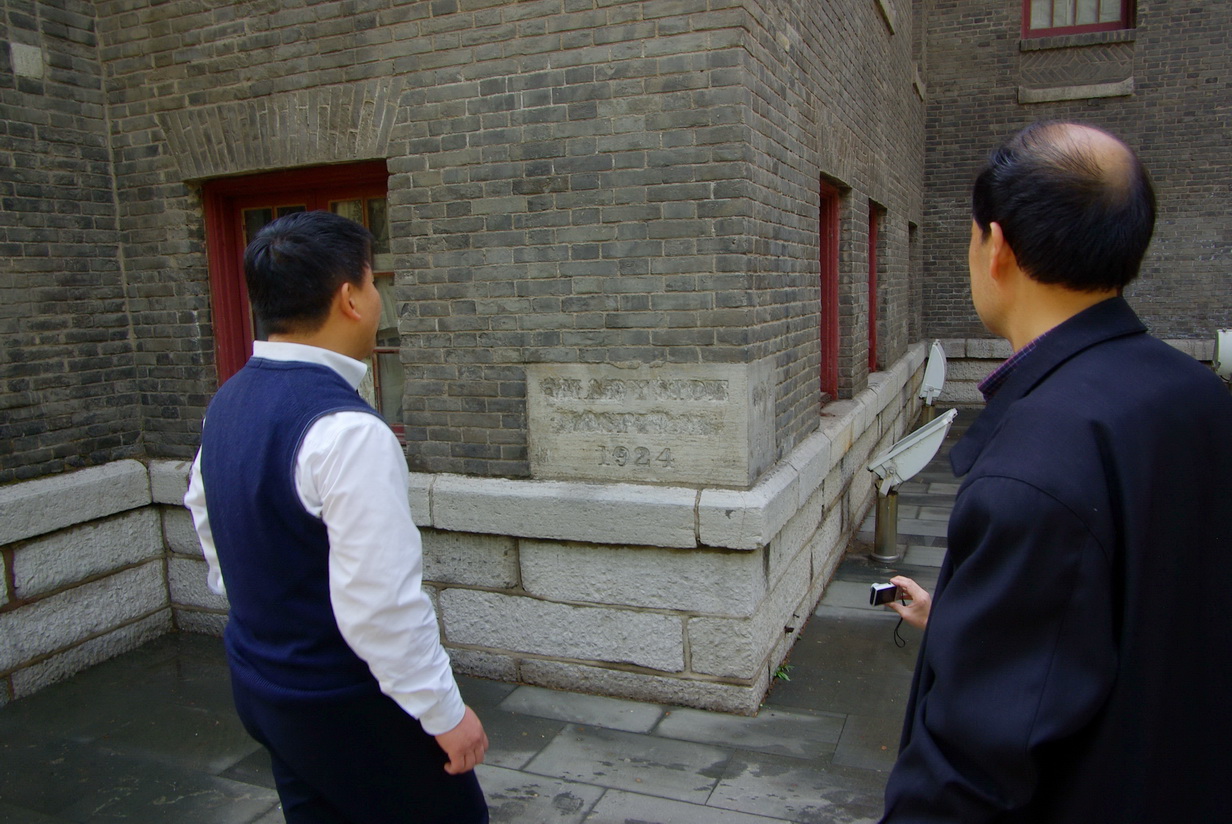
My friends pointed out the cornerstone laid in 1924. Interestingly, much of the original inscription had been defaced (most likely from excesses of the Cultural Revolution). Nevertheless, the important connection between this first Christian mission hospital and the huge new modern hospital located nearby, is again proudly celebrated in the insignia of the new hospital.

I know that China has much to be proud of in celebrating its ancient history and cultural achievements. I also understand something of the difficult years when foreign contacts were too often associated with coercion and exploitation. I was therefore pleased to see the connections with this earlier history preserved in the symbols for both the school and the hospital.
In a follow-up blog article, I focus on the period of the Japanese occupation. But, for now, we should remember that this mission property, dating from the early 1880s, was home to a boys school, a girls school, and also once housed Tengchow College, the first significant higher education college established by foreigners in China. As the site developed, hundreds of Chinese students were educated here and dozens of foreign teachers and their families served here.
There is a fascinating history, too, of hospitals being established during this period. Shadyside Hospital was just one more hospital being added to the expanding educational complex created here by the American and other foreign mission groups.
The Japanese, for good reason, chose this sight as the major internment camp for foreigners. The infrastructure here at Weihsien made this site a better choice than most other places to provide housing for 1500 or more prisoners from 1943 through to the end of the war.
The name of this mission complex was “Courtyard of the Happy Way” (or Ledaoyuan, in pinyin). My hope is that many happy memories of peace and love might continue to linger here to help balance out some of the sadness associated with exploitation and war.
More photos and additional details:
-
1 – Eric Liddell – Early Olympic Hero in China
2 – Weifang (Shandong) – Historic School and Hospital (current article)
3 – Weifang (Shandong) – Japanese Internment Camp
4 – Shandong University – Its Early Years
5 – More Early History of Western Education in Shandong (under development)
- Note: This blog was adapted from East Meets West 02 — Weifang’s Historic School and Hospital, published by the same author on the Hunan Government English language website, 3Us, at: http://forum.3us.com/thread-64360-1-1.html
First published here: 2015/08/12
Latest revision: 2021/06/24
